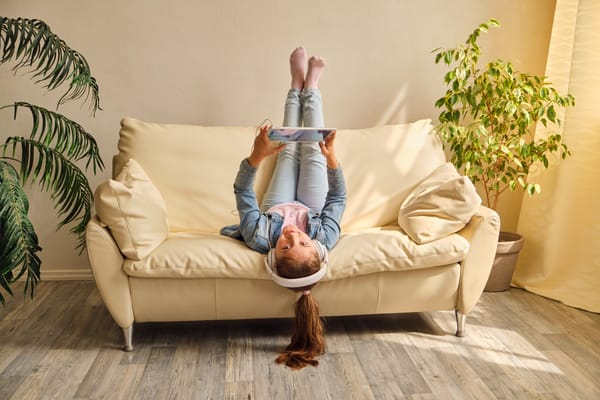How to Help When Exam Time Breaks Their Brain

This isn’t a tips-and-tricks post. It’s a soft landing.
If exam time is a battlefield in your house — doors slamming, heads dropping, shame creeping in — you’re not alone.
And you’re not failing.
Some kids genuinely can’t do the “just study” thing.
Not because they don’t care.
But because their brains weren’t built for this kind of pressure.
Especially if they’re navigating ADHD. Or dyslexia. Or both.
Or just a spirit that shuts down the moment fear walks in.
So let’s set aside the school jargon, and talk about what actually helps — in the living room, at 7pm, when everything feels too loud.
🔹 Step 1: Ditch the timeline. Regulate first.
There’s no point trying to study if their nervous system is in red alert.
What to look for:
• Fidgeting that turns frantic
• Sudden outbursts or zoning out
• “I’m stupid. I can’t do this.”
• Refusal disguised as apathy
What to do instead:
• Sensory reset — chew ice, bounce a ball, change posture
• Drop the volume of your voice (and your expectations)
• Say: “Let’s calm your body first. The rest can wait.”
You’re not falling behind. You’re helping their brain come back online.
🔹 Step 2: Study backwards.
ADHD brains don’t start with Chapter 1. They need context, stakes, and story.
Try this:
• Start with the exam question
• Break it into mini-missions: “Find 3 key words.” “Say it in your own words.”
• Work backwards to build the why
For dyslexic learners:
They often remember shapes, sounds, and sequences — not dense paragraphs.
So:
• Use colour-coding, arrows, symbols
• Record and loop their own voice
• Let them talk — to a voice note, to you, to the dog. It still counts.
🔹 Step 3: Keep time visible — and kind.
Time blindness is real. So is overwhelm.
Use:
🕑 Visual timers
📋 One goal at a time on a whiteboard
🎧 Playlists with built-in break cues
🧩 “Mini-stacks” of revision (3 flashcards = 1 win)
Forget hours. Forget marathons.
Your child is learning in sprints, on uneven ground, in shoes that don’t quite fit.
Cheer for every step.
🔹 Step 4: Use your voice like scaffolding.
Not to fix. To hold.
Say:
“You’ve done hard things before.”
“Your brain works differently — that’s not a flaw.”
“Let’s figure out your way in.”
When kids believe they can’t learn, they stop trying to.
You become the voice that rewires that belief.
🔹 Step 5: Build memory with movement.
Memory doesn’t live in silence and stillness for these kids.
It lives in action.
🟦 Build timelines with Lego
🟨 Walk the garden reciting key points
🟥 Use colour to mark themes (blue = plot, red = quote, yellow = vocab)
🟩 Turn poems into soundtracks or raps
🟫 Teach the dog — yes, really. Teaching forces recall.
🔹 Step 6: Let them see the bigger story.
Not the one where marks equal value.
The one where their brain matters. Where school is one chapter — not the whole book.
Remind them:
“This is a test of memory, not of who you are.”
“You can still be successful, even if this part feels impossible.”
“We’ll learn how to navigate — not just survive.”
🔹 For You, the Parent
You’re holding space, holding back tears, and holding the emotional centre of the house.
Don’t forget:
• They don’t need you to know all the content.
• They need you to stay when they fall apart.
• They need your calm more than your curriculum.
Yes — it’s exhausting.
But this is where the real teaching lives.
This is what changes who they believe they are.
🧠 Exam Week Toolkit
For ADHD, Dyslexic & Differently-Wired Kids
Keep this part on the fridge. Or your heart.
🔹 1. EMOTIONAL FIRST AID KIT
Before any studying starts, check in:
• Are they calm enough to learn?
• Do they feel safe in their body?
• Are they carrying shame?
Fast resets that work:❄️ Ice water or a crunchy snack
🌱 Stand outside barefoot for 2 minutes
🧘🏽 Deep breathing — together
🗣 “You’re safe. We’ll find a way.”
🧸 Compression hug, fidget stretch, heavy blanket
✨ “Your brain learns differently. That’s not a flaw.”
🔹 2. STUDY SETUP THAT HELPS — NOT HURTS
Visual Environment✅ Clear space (desk or floor)
✅ Subject wall charts, sticky notes, checklists
✅ Timer in sight
Sensory Add-ons🎧 Lo-fi or brown noise
🪑 Wobble cushion, bean bag, or ability to move
🖐 Fidget toy, weighted lap pad, chewing gum
Emotionally Safe Space❤️ “Mistakes allowed” zone
🗓 Visible daily planner with only 1–2 goals
🔹 3. NEURODIVERGENT STUDY METHODS (PICK + MIX)
For ADHD Brains:🔁 Teach the content out loud
⏱ Chunk time in odd blocks (7-3-12 mins)
🗂 Flashcard battles (win or retire)
🎯 Start with the question — not the chapter
For Dyslexic Brains:🎙 Record and replay key points
🌈 Colour-code for meaning
🧠 Mind maps, not lined summaries
📖 Text-to-speech apps for review
🔹 4. TIME MANAGEMENT WITHOUT TEARS
The “Stacked Sprint” Method:
- Set timer (5–10 mins)
- Choose one tiny task (“Find 3 facts”)
- Take a movement break
- Repeat up to 3 rounds
- Stop — and call it a win
Tools that help:🕒 Time Timer or VisuTimer app
📋 Whiteboard planner
📱 Google Keep (with voice note capture)
🔹 5. SCRIPTS FOR MELTDOWN MOMENTS
When they say: “I can’t.”
“Let’s try a different way in.”
Before the paper:
“You’ve survived 100% of your worst days. This is just paper and ink.”
After a poor result:
“That was a memory test — not a worth test.”
When you hit the wall:
“I’m overwhelmed too. Let’s take five and start fresh.”
🔹 6. EXAM DAY GROUNDING RITUAL
Morning checklist:
☑️ Eat protein + carbs
☑️ Hydrate
☑️ Pack fidget/snack/coloured pens
☑️ Say it together:
“My brain works. My way is allowed. I’m safe.”
Evening debrief:
☑️ Ask: “What felt easy?”
☑️ Say: “I’m proud of how you showed up.”
☑️ Let it go. Don’t overanalyse.
🔹 7. REMEMBER: YOU ARE THE SAFE BASE
You don’t have to have the answers.
You don’t need a teaching degree.
You just need to stay.
Regulate you, and they’ll learn to regulate too.
This week might be messy — but it’s sacred work.
You are the anchor. That is enough.
About the Author
Nicola Killops is a South African educator, writer, and neurodiversity advocate with over two decades of experience working with differently-wired learners. As the founder of NeuroParenting Hub, she supports families raising ADHD, dyslexic, gifted, and emotionally intense children — blending lived experience with deep pedagogical insight.
Nicola is also the creator of The Other Way In — a growing series of neuro-friendly study guides that reimagine high school literature for learners who think in colour, movement, metaphor, or chaos. The series is currently focused on the Matric Literature syllabus, with full guides for Hamlet, Othello, and Brave New World designed specifically for students who freeze at dense text but flourish with emotional anchors, visual learning, and scaffolding that makes sense.
Nicola lives between the bookshelves and the kitchen table, raising her own intensely curious son while helping other families navigate the school system with less panic and more truth.





